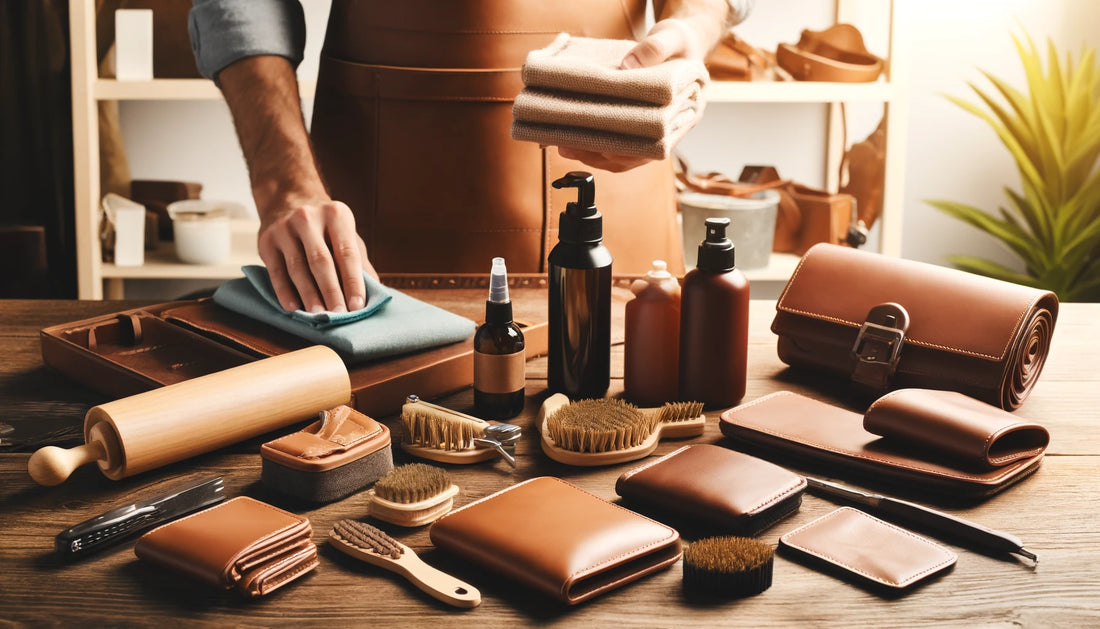Leather is a timeless material known for its durability and classic aesthetic. From wallets to handbags, leather goods are a staple in many wardrobes. However, leather requires a bit of care to maintain its appearance and prolong its life. In this guide, we'll walk you through the essential steps and tips for caring for your leather products.
Understanding Leather
Before diving into care techniques, it's crucial to understand the types of leather. Leather can be categorized into several types, including full-grain, top-grain, genuine, and bonded leather. Full-grain leather, often used in high-quality leather goods, retains the natural texture of the animal's skin and is the most durable. Knowing the type of leather you own helps tailor your care approach to suit its specific needs.
Daily Care Tips
Keep It Clean
Surface Dirt: Regularly wipe your leather items with a soft, dry cloth to remove surface dirt. For tougher spots, lightly dampen the cloth with distilled water.
Deep Cleaning: Every few months, use a specialized leather cleaner to deep clean your items. Apply a small amount on a soft cloth and gently rub it onto the leather in circular motions.
Conditioning
Leather, like skin, needs moisturization to prevent drying and cracking. Use a quality leather conditioner every 3 to 6 months. Apply the conditioner with a soft cloth, allow it to absorb for a few minutes, then buff off any excess.
Protection
Water Repellent: Apply a water-repellent product to your leather goods to protect them from moisture and stains. Ensure the repellent is suitable for leather and does not contain harmful chemicals.
Avoid Sunlight and Heat: Prolonged exposure to direct sunlight or high temperatures can cause leather to fade and deteriorate. Store your leather goods in cool, shaded areas.
Storing Leather
Proper storage is vital for maintaining the shape and integrity of leather goods:
- Air Circulation: Store leather in a breathable cloth bag instead of plastic to prevent moisture buildup that can lead to mold.
- Maintain Shape: Use products like padded hangers for leather jackets and stuff bags or cushioning in shoes and bags to help them maintain their shape.
- Avoid Overcrowding: Give leather goods plenty of space in storage to prevent scratches and deformations.
Dealing with Stains and Spills
Act quickly when dealing with spills:- Blotting Technique: Blot spills immediately with a clean, absorbent cloth. Avoid rubbing, as this can push the spill deeper into the leather.
- Stain Removal: For persistent stains, consider a leather-specific stain remover. Test it on an inconspicuous area first to ensure it doesn’t affect the colour or texture.
Professional Care
Sometimes, leather goods may require professional attention:- Annual Check-Up: Just like any other premium product, consider taking your high-end leather goods for a professional cleaning and conditioning service annually.
- Repairs: For tears, deep cuts, or other significant damage, consult a professional leather repair service to restore your item effectively.

